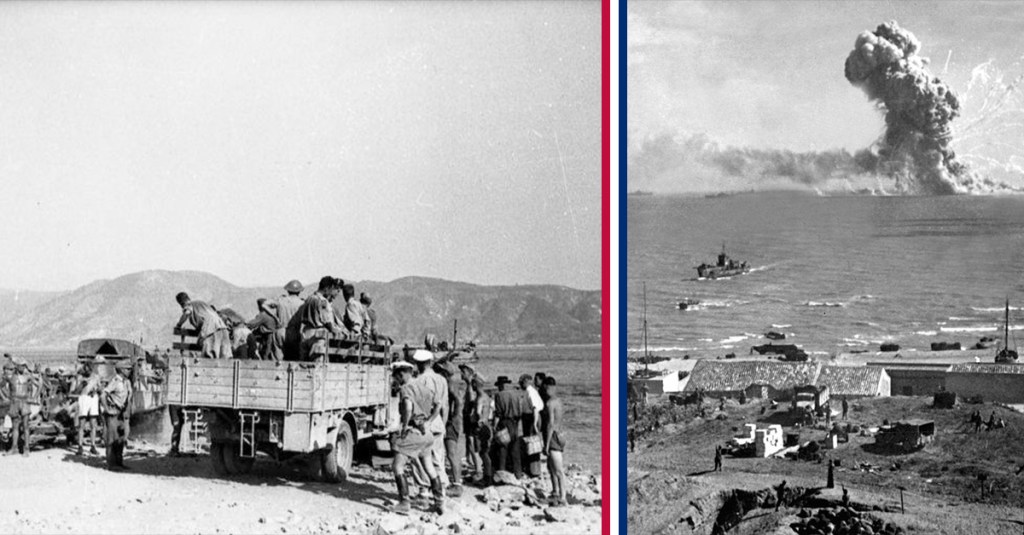When German and Italian forces began to collapse in Sicily in World War II, it became clear that they could either fight to the last man or could evacuate the 100,000 men and gear to Italy to man a series of defensive lines that would cost the Allies years to conquer. They launched a massive evacuation as armored generals George Patton and Bernard Montgomery raced for their blood.

The Liberty Ship Robert Rowan explodes after suffering multiple bomb hits during Operation Husky. The ship had been filled with vital ammunition that, when burning, was also volatile.
(U.S. Army Signal Corps)
Operation Husky, the Allied invasion of Sicily in July 1943, was not without its flaws and screw-ups, but the Allied troops tore open a gap on the beaches and then pressed themselves against the Axis lines, driving back German and Italian troops.
U.S. Lt. Gen. George S. Patton Jr. and British Gen. Bernard L. Montgomery raced at the head of armored columns toward the port city of Messina on the island of Sicily’s east coast. Messina sat only two miles from the Italian mainland. If Germany had enough time there, it could ferry many of the 100,000 survivors to safety to fight again.
Germany had lost about 250,000 to capture in North Africa. It couldn’t afford six figures again, especially with the growing weakness of Italy as an ally. Mussolini was killed by crowds at home, and it was clear that Italian troops wouldn’t necessarily remain.
For weeks, German and Italian troops dug into the mountains, fighting delaying actions. On August 8, with the eventual collapse clear, Germany began secretly ferrying 60,000 Italian troops and about 40,000 Germans across to Italy.

German troops and their British prisoners of war wait for the return of a ferry that would take them from Sicily to mainland Italy in August 1943.
(Bild Bundesarchiv)
The Allies knew by the next day that some sort of evacuation was underway. But just like how the Nazis failed to capitalize on the Dunkirk evacuation, so too did the Allies fail at Messina. Allied leaders remained focused on the ground fight. No ships closed the Strait of Messina, no planes took out the ports in Messina or mainland Italy.
This failure would come under scrutiny at the time and in the decades since.
Germany not only got approximately 100,000 Axis troops across, they were able to recover 2,000 tons of ammunition, 47 tanks, 94 heavy artillery pieces, and almost 10,000 vehicles, a massive success of sealift capability.

Lt. Gen. George S. Patton, Jr., speaks with Lt. Col. Lyle Bernard near the city of Brolo on Sicily. As the sign in the back indicates, Messina is nearby.
(U.S. Army Signal Corps)
Of course, this made liberating Messina much easier than it otherwise would have been for Patton and Montgomery. But just like the evacuation at Dunkirk meant that Germany would have to face those troops later, the evacuation at Messina allowed Germany to reinforce itself in Italy.
This not only meant there were more German troops to kill in the defensive lines, but there were more German troops to hold Italy in the Tripartite Pact even as regular Italians wanted out.


























